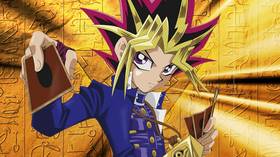Japan confirms death of Yu-Gi-Oh creator


Kazuki Takahashi, the manga artist who created ‘Yu-Gi-Oh!’ and helped launch one of the biggest game franchises in world history, has died. His body was found by the Japanese coast guard, floating off the coast of Okinawa on Wednesday. The 60-year-old was wearing snorkeling gear and appeared to have drowned. An investigation into the cause of death is ongoing.
“We are shocked and saddened to hear of the sudden passing of Mr. Kazuki Takahashi,” the official Yu-Gi-Oh! Twitter account posted on Thursday. “We are deeply grateful for the wonderful ‘Yu-Gi-Oh!’ universe that he has created, and our thoughts are with his friends and family at this difficult time.”
“Together with his countless fans, we pledge to carry on the ‘Yu-Gi-Oh!’ legacy with all the love and care it deserves,” the company added.
Earlier in the day, the Japanese coast guard told reporters it had identified the body found on Wednesday floating off the coast of Nago City in Okinawa Prefecture as that of Takahashi. He had been traveling alone and was snorkeling when he died of unknown causes, a coast guard spokesman said.
Takahashi was born in October 1961 and started out as a manga artist in 1982. He struggled until 1996, when he created Yu-Gi-Oh! (“King of Games”), a battle manga that would run until 2004 in the Weekly Shonen Jump.
His original idea was to showcase different ways for characters to ‘battle’ using games and puzzles. The series’ protagonist, Yugi Mutou, gains the powers of the King of Games by solving the Millennium Puzzle. However, the episodes featuring a trading card game – dubbed ‘Magic and Wizards’, later translated as ‘Duel Monsters’– gained so much traction, Takahashi committed to that concept instead.
I’m devastated to learn of the passing of Kazuki Takahashi (Yu-Gi-Oh!’s author)He was found off the coast of the city of Nago, in a diving equipment.I’ve loved YGO since so many years, I can't even put how I feel into words..Rest in peace, your work was truly inspirational pic.twitter.com/wd0KFGXAwN
— Yu-Gi-Oh! Artworks (@YugiohArt) July 7, 2022
The game’s original name was a clear homage to the Wizards of the Coast card game ‘Magic: The Gathering’. By 1999, Konami had launched the Yu-Gi-Oh! Trading Card Game in Japan. It debuted in the US in 2002, and was later published by Bandai. By 2009, it had sold over 22 billion cards worldwide, and was recognized by the Guinness Book of World Records as the globe’s top-selling collectible card game, earning billions in revenue.
“In our daily life, we never get to see ourselves except by standing in front of a mirror. But even a mirror won’t reflect our hearts,” Takahashi wrote in April 2004, in the afterword to the manga series. “As we go about our lives, we touch people, we see people, and interact with them; and in doing so we feel and think many things. Sometimes we make others happy, sometimes we hurt them, we sympathize, and we disagree. In the midst of this, we learn that people’s thoughts and feelings are not a one-way street.”
Takahashi was a fan of many other manga and comic book artists, famously exchanging art with Hellboy creator Mike Mignola. He also personally drew the art for a Yu-Gi-Oh! card based on his pet dog, a shiba inu named Taro.